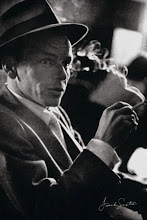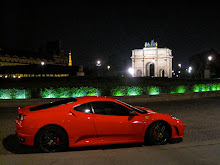Tuesday, September 8, 2015
Maserati and the branding of engine sounds
Of all the cars I've owned over the years, the most exciting ones came with a compelling soundtrack in the form of engine noise which, like the musical score of a great film, served as an emotional tour guide for the experience. The absolute best was the Ferrari GTO followed by the Berlinetta Lusso of the same brand. The Ferrari Pininfarina coupe was also very nice but seemed subdued in comparison and was more of a gentleman's GT than the racer-GT that I preferred. Riding in my friend Scott McClure's Dino confirmed that the importance of the soundtrack was still revered in that model range and driving a certain Ferrari F355 Spider with aftermarket exhaust was like listening to the Mario Lanza of Dinos. Having established that Ferraris were my favorite in terms of aural delight, I must say that the Series 1 Maserati Quattroporte offered quite a lot of pleasing sensations.
Though the Quattroporte was a sedan as the name implies, it was quick and responsive and came equipped with a DOHC 4-liter (252 cubic inch) V8 engine aspirated by four Weber carburetors. It was designed for racing and that heritage made itself known in the Quattroporte. This Maserati made all the right sounds--you could actually hear the engine breathing--unlike my Maserati Mistrals which had fuel injection and were more akin to the rather conservative Pininfarina coupe, in my view. I was living in a house above Coldwater Canyon at the time and can still hear the sound of that throaty V8 echoing off the canyon walls as I navigated the curves at politically-incorrect speeds with the windows lowered making full use of the ZF 5-speed gearbox.
The Frua-designed coachwork was distinctive--a legitimate 4-door GT--and the interior was opulent with leather on every surface. Driving the car was like being in a Marcello Mastroianni movie. Few people on the road knew what is was but they certainly knew it was something. It would cruise along at 130 mph with less effort than most cars of the day did at 65 mph. It was also a rare sight on the road and I was surprised on the three occasions when I came across one in the most unlikely placers; a carport at the Quintas Papagayo resort just outside of Ensenada, Mexico and another in the parking lot of the Sea Lion in Malibu (before it became Duke's) for example. On another occasion, a silver Quattroporte rolled past as I was taking a delivery of a steel gray (with Bordeaux leather) Series III Jaguar XJ6. The sound of the Maserati engine caused me to wonder if I was buying the right car. Those are the only times I recall ever seeing a Series 1 Quattroporte on the road. From 1963-66, only 230 Quattroportes left the Maserati factory in Modena, Italy.
The Maserati Quattroporte had another distinction--it was one of the special cars I would get into late at night for the pure pleasure of going for a ride, which I think is the ultimate test of a car's attraction, and the sound coming from that legendary engine played a large part. In recognition of the passions stirred by the sound of their engine, Harley-Davidson filed an application to trademark the distinctive sound. It was later withdrawn, but enthusiasts everywhere understood the point being made.
Trademarked or not, the sound of a car's engine is an integral part of its brand.
Subscribe to:
Post Comments (Atom)


























































No comments:
Post a Comment